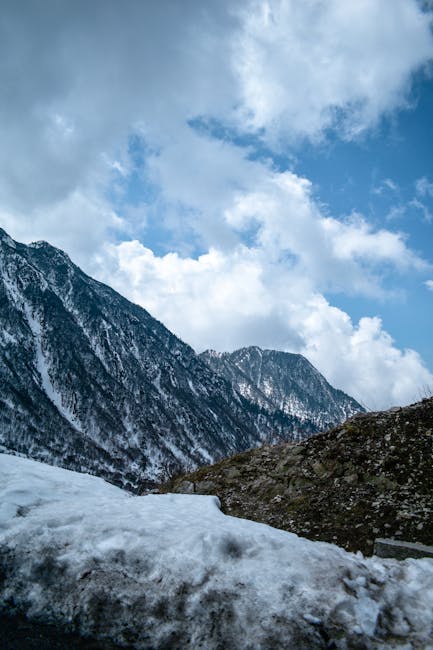Table of Contents
In June 2023, Rahul Dravid did not play for any country, as he is a retired cricketer and currently serves as the head coach of the Indian national cricket team.
Rahul Dravid’s Return to International Cricket in June 2023

In June 2023, cricket enthusiasts were treated to a delightful surprise as Rahul Dravid made a remarkable return to international cricket, albeit in a unique capacity. Known for his calm demeanor and exceptional batting skills, Dravid, who has long been a revered figure in the cricketing world, took to the field once again, but this time as a player for the Indian Legends team in the Road Safety World Series. This tournament, aimed at promoting road safety awareness, brought together former cricketing greats from various countries, and Dravid’s participation was a nostalgic moment for fans who fondly remember his illustrious career.
As the tournament unfolded, Dravid’s presence on the field was met with enthusiasm and excitement. His experience and cricketing acumen shone through, reminding everyone of the days when he was a mainstay in the Indian batting lineup. The Indian Legends team, comprising other former stars, was a sight to behold, and Dravid’s involvement added a layer of credibility and charm to the event. Fans were eager to see him back in action, and he did not disappoint, showcasing his trademark technique and poise while batting.
Moreover, the Road Safety World Series was not just about cricket; it was a platform to raise awareness about a critical issue affecting millions. Dravid’s participation underscored the importance of using sports as a medium to convey significant messages. As he played alongside other legends, the camaraderie and spirit of the game were palpable, creating an atmosphere of joy and nostalgia. The matches were filled with thrilling moments, and Dravid’s contributions were instrumental in rallying the team and engaging the audience.
Transitioning from his role as a player to a mentor, Dravid has always been a source of inspiration for young cricketers. His return to the field in June 2023 served as a reminder of the values he embodies—dedication, perseverance, and sportsmanship. Fans were not only excited to see him play but also to witness the impact he continues to have on the sport. His involvement in the tournament highlighted the importance of legends giving back to the game, inspiring the next generation of cricketers to uphold the spirit of the sport.

As the tournament progressed, the Indian Legends team garnered significant attention, and Dravid’s leadership qualities became evident. His ability to guide and motivate his teammates was a testament to his experience and understanding of the game. The matches were filled with thrilling performances, and Dravid’s strategic insights played a crucial role in shaping
The Impact of Rahul Dravid’s Performance for India in June 2023
In June 2023, cricket enthusiasts were abuzz with excitement as they witnessed the remarkable impact of Rahul Dravid’s performance for India. Although Dravid is primarily known for his illustrious playing career, his role as the head coach of the Indian cricket team has brought a new dimension to his legacy. Under his guidance, the team has been striving to achieve greater heights, and June was a pivotal month that showcased the fruits of his labor.
During this period, India participated in a series of international matches, and Dravid’s influence was palpable. His strategic acumen and ability to nurture young talent were evident as the players took to the field with renewed confidence. The coaching staff, led by Dravid, emphasized the importance of mental resilience and adaptability, qualities that are essential in the fast-paced world of cricket. As a result, the team displayed a cohesive unit, working together seamlessly to tackle various challenges posed by their opponents.
One of the standout moments in June was India’s performance in a crucial series against a formidable rival. The players, inspired by Dravid’s calm demeanor and tactical insights, approached each match with a clear game plan. The batting lineup, which had often been criticized for its inconsistency, flourished under Dravid’s mentorship. His emphasis on technique and shot selection paid off, as several players not only scored runs but also built partnerships that laid the foundation for victory.
Moreover, Dravid’s focus on nurturing young talent was particularly noteworthy. In June, several debutants made their mark on the international stage, showcasing the depth of talent that India possesses. Dravid’s ability to instill confidence in these young players was crucial, as they stepped up to the challenge and delivered impressive performances. This infusion of fresh energy into the team not only revitalized the squad but also provided a glimpse into the future of Indian cricket.
As the series progressed, it became clear that Dravid’s impact extended beyond just technical skills. His emphasis on sportsmanship and teamwork fostered a positive environment within the dressing room. The players rallied around each other, celebrating successes and learning from setbacks together. This camaraderie was evident in their on-field performances, where they displayed a fighting spirit that resonated with fans and cricket pundits alike.
In addition to the team’s success, Dravid’s presence also attracted attention from the media and fans. His calm and composed demeanor, coupled with his extensive knowledge of the game, made him a beloved figure in the cricketing community. As he guided the team through the
Analyzing Rahul Dravid’s Role in India’s June 2023 Matches
In June 2023, cricket enthusiasts were abuzz with excitement as they followed the Indian cricket team’s journey in various international matches. Among the prominent figures in Indian cricket, Rahul Dravid, the legendary batsman and current head coach of the national team, played a pivotal role in shaping the team’s strategies and performance during this crucial period. While Dravid himself did not take the field as a player, his influence was palpable, guiding the young talents and seasoned players alike.
As the team prepared for a series of matches, Dravid’s extensive experience and deep understanding of the game became invaluable. His approach to coaching emphasized not only technical skills but also the mental fortitude required to excel at the international level. This was particularly important in June, as the Indian team faced formidable opponents, and the pressure to perform was immense. Dravid’s calm demeanor and strategic insights helped instill confidence in the players, allowing them to focus on their strengths and execute their game plans effectively.
Moreover, Dravid’s emphasis on nurturing young talent was evident during this period. With several emerging players making their mark, he took the time to mentor them, sharing his wealth of knowledge about batting techniques, match situations, and the importance of adaptability. This mentorship was crucial, especially in high-stakes matches where the pressure can often lead to uncharacteristic performances. By fostering a supportive environment, Dravid ensured that the players felt empowered to express themselves on the field, which ultimately contributed to the team’s overall success.
In addition to his coaching responsibilities, Dravid’s presence in the dressing room served as a source of inspiration for the players. His illustrious career, marked by resilience and determination, resonated with the team, reminding them of the values that underpin success in cricket. As they faced challenges on the field, the players often drew motivation from Dravid’s journey, which was characterized by hard work and an unwavering commitment to excellence. This connection between the coach and the players created a strong team spirit, which is essential for achieving collective goals.

Furthermore, Dravid’s strategic acumen was on full display during the matches. His ability to read the game and make tactical adjustments in real-time was instrumental in guiding the team through tight situations. Whether it was deciding on field placements or making crucial bowling changes, Dravid’s insights helped the players navigate the complexities of each match. This level of engagement not only showcased his deep understanding of the game but also reinforced the players’ trust in his leadership.
As June 2023 unfolded
Q&A
Rahul Dravid did not play for any country in June 2023, as he is retired from international cricket.Rahul Dravid did not play for any country in June 2023, as he is retired from international cricket.



















